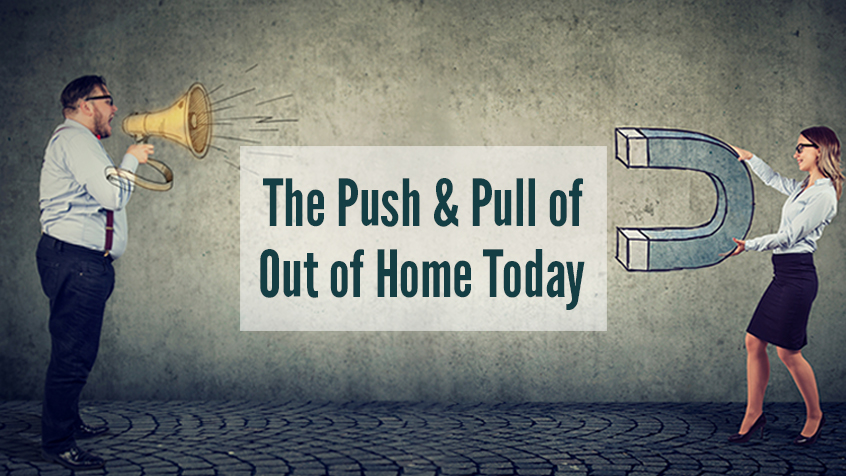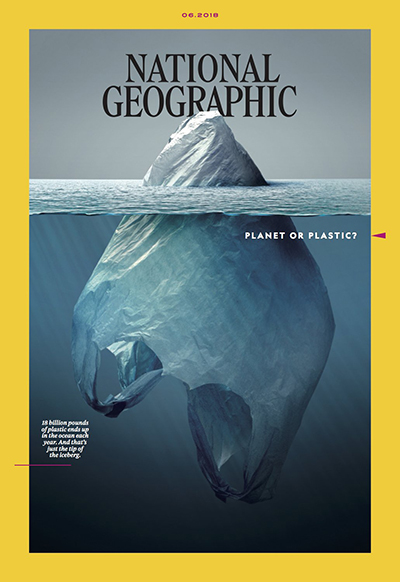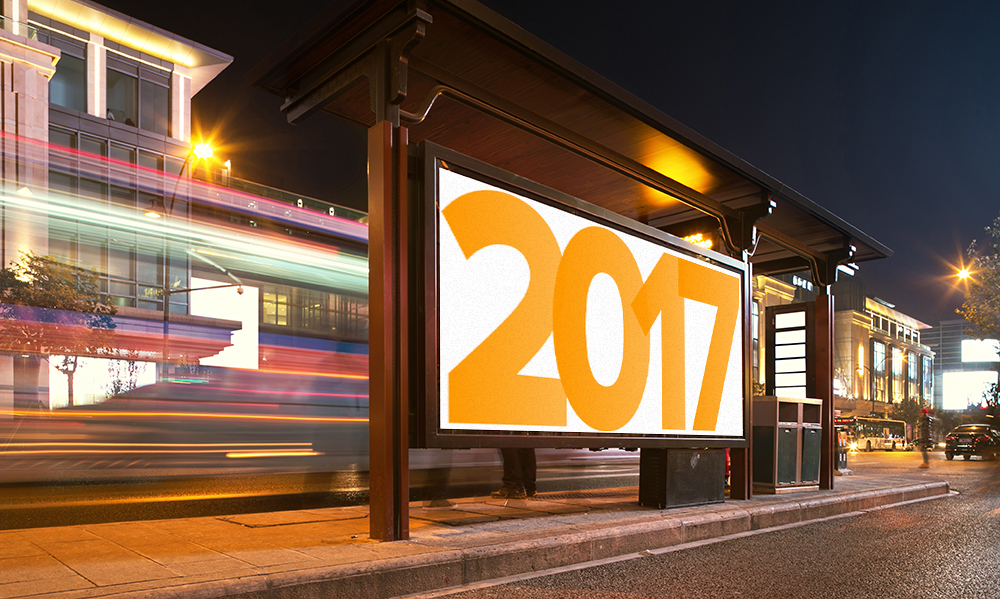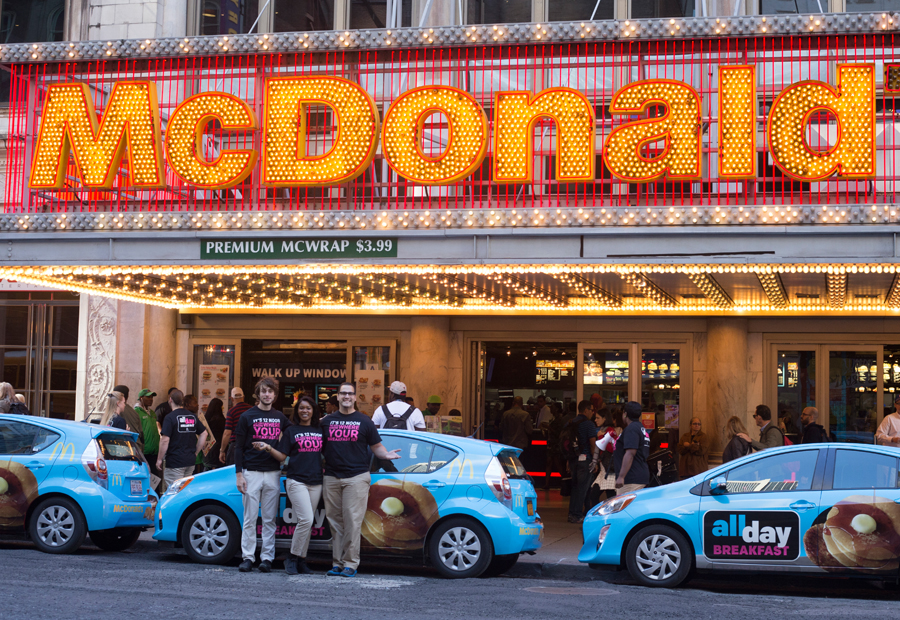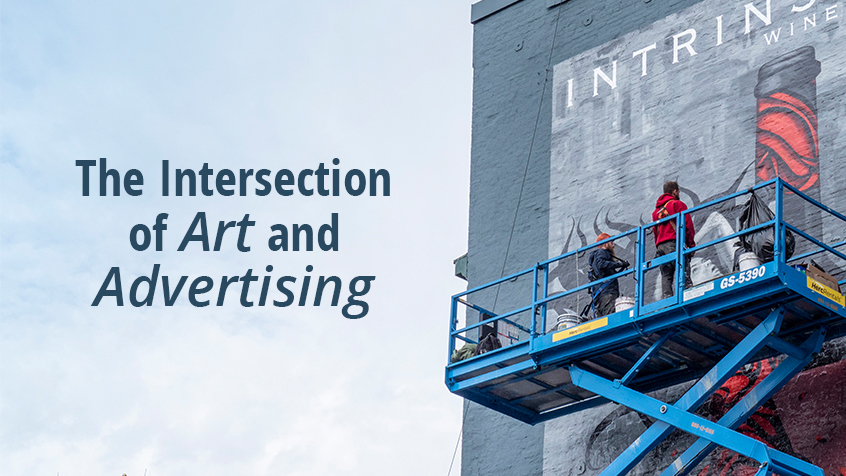In the world of Dr. Doolittle, he discovers a rare creature called a Pushmi-Pullyu. It is a “gazelle/unicorn cross” with two heads, each one at opposite ends of its body. The Pushmi-Pullyu uses one of its heads to talk while the other is eating so it can eat and talk without being rude, according to the story by Hugh Lofting.
This fantastical animal can be an analogy for the state of marketing today. For a long time, advertising messaging was simply pushed out to consumers through mass media channels. Today, brand’s media choices distribute content for the purpose of pulling in audiences. Data, technology and creativity all feed today’s out of home messaging. The result is a smarter and more authentic experience, which draws audiences into the brand story.
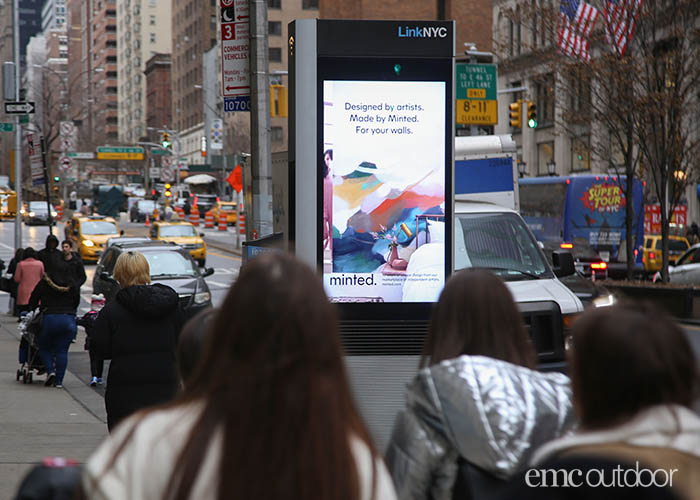
Narrowcasting
From the start, through ancient obelisks and posters, out of home (OOH) has broadcast messages. With the advent of radio, print and TV, a cross-pollination of media channels began to broadcast news and advertising to even greater masses. Campaigns developed iconic branding that focused on broad emotional themes of happiness, affinity, desire, excitement, fear, humor and surprise.
In those early days, measurement was in the form of how many eyeballs a message reached. Reach was easier to measure, especially with high frequency, because it was always difficult to prove engagement beyond the consideration phase. That famous statement from John Wanamaker, department store magnate, comes to mind. He said, “Half the money I spend on advertising is wasted; the trouble is, I don’t know which half.”
Today, advertisers are seeking marketers who deliver quantifiable results to answer the question and justify the ad spend. The available tools today provide better audience targeting based on location, search data and product purchases. Audience segmentation allows marketers to cast a narrower net based on pattern identification of behavior, movement, relationships and conversations. What is learned by listening, tracking and analysis can arm a marketer with keen audience insights into who they are, what motivates them and how a tailored message can reach them.
Quantity is less valued than quality interactions and actionable results, aligned with the viewer’s preferences. Reach is no less important, but now we can measure the results much further down the purchase funnel to answer the ROI question better than ever.
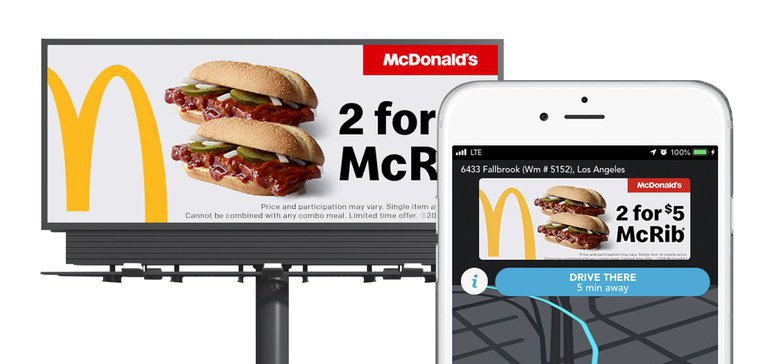
We saw a recent example of this narrowcast ability from a recent McDonald’s and Waze partnership. McDonald’s tested a campaign in SoCal that paired OOH and Waze in-app mobile ads. They geofenced the physical billboard assets to integrate a virtual message offering users directions to the closest McDonald’s location. The campaign saw “more than 8,400 navigations”, that is users who clicked to follow the directions. In all, the 8-week campaign reached 1.9 million unique consumers.
According to Waze’ OOH Business Lead, Todd Palatnek, measurable action was taken by consumers after the ads were served the coordinated media campaign. This powerful combination pulled interested parties to nearby restaurants via a timed and relevant message, resulting in more impressions, store visits and sales.
Digital Influence
Brands connecting on social media through micro and macro influencers has become an integral channel to building audience trust. Content that strikes an emotional chord can go viral and turn viewers into brand ambassadors. According to a recent Nielson study, one in four U.S. adults surveyed has posted a photo on Instagram after seeing an OOH ad. These brand social ambassadors can pull their trusted circle into the conversation, spreading the message at the right time with the right audience. Never has the immediacy of combining two media channels had the reach to a specific, relevant and willing audience that organically grows the brand story.
Digital out of home (DOOH) provides an extension to social interaction by creating a space for a brand to converse with their audiences. Through a combination of mobile and location data and brand experiences, there is an opportunity for a brand-consumer dialogue, digitally and socially. This allows brands to influence each exchange with relevance.
A recent OOH campaign for Jenni Kayne, featuring fashionista Tylynn Nguyen, made a viral splash with creative of the model breast-feeding. Carly Zipp, Outfront Media’s Communications Director, commented on the campaign, highlighting the powerful combination of social media and OOH:
“Jenni Kayne’s OOH campaign featured images of lingerie designer, mom of three and influencer Tylynn Nguyen breastfeeding, representing working moms and encouraging them to share their stories. The OOH campaign triggered a 1,305% increase in social media mentions and user-created content as well as a 3x increase in sales.”
We see another example of digital influence with National Geographic’s magazine cover of a plastic bag floating in the ocean. It’s positioned to look like the tip of an iceberg–a commentary of the amount of trash ending up in our oceans. At the 2019 OAAA/Geopath Conference, Jill Cress, CMO of National Geographic, talked about how the cover served to “start a conversation.” It then took on a life of its own across numerous media channels, OOH and social media. The image sparked hundreds of thousands of tweets, mentions and shares. It brought the environmental impact conversation to the forefront of audience’s consciousness.
With a strategy that included a billboard campaign, a new question arose: how should we dispose of the discarded vinyl? They found an ingenious way to recycle the materials and support conservation efforts by repurposing them into shopping bags. Their example proves that brands who embrace a cause and start an authentic conversation can win the hearts and minds of consumers.
By combining two major forces, social media and OOH, we see brands reach consumers in interesting and impactful ways. The brand statement pulls in audiences. They desire to be a part of the discussion, therefore opening themselves up to an ongoing dialogue with the brand.
Imagination & Innovation
OOH is a canvas, limited only by the imagination. When you marry new OOH technology with dynamic content, the results are powerful. Take the most recent OOH + AR campaign for Avengers End Game and McDonald’s. A transit shelter ad “unleashes superpowers” via augmented reality that recreates the fantastical forces seen in the movie. The eye-catching campaign delighted and informed passersby with shareable content that propelled the message to go viral.
The effectiveness of this campaign lies in the imagination of its creators to replicate key elements. That lends to generating interest in real life (IRL) and drive more organic reach online (URL). It is a clear example of the powerful pull of advertising that piques the audience’s curiosity.
This is not the first time OOH has combined with AR for maximum impact. The forerunner that received critical acclaim was Pepsi’s Unbelievable campaign in 2014. It, too, utilized AR technology to create life-like disaster scenarios that sparked interest with more than 6 million views.
Today’s OOH technology and footprint combine with innovation and imagination to create possibilities for surprising and delighting audiences. It makes them eager to know more. It also pulls them into a search circle, or a conversation with the brand, or makes them an advocate within their sphere of influence—all measurable activities.
Integration & Engagement
Being agile in real life is possible today with real-time analytics. We are in a new paradigm where brands experiment with data to reach the right audience at the right time with the right message.
Using the technology and tools available, companies are spending more on marketing and expecting measurable results. Marketers are creating journeys based on psychographic patterns and stories told. They are more apt today to integrate multiple channels as opposed to the silver bullet 30-second TV spot of the past. That includes traditional and digital media, as well as social and influencer strategies.
In today’s markets, OOH offers advertisers hundreds of options to reach highly targeted audiences, efficiently, dynamically and cost-effectively. It compliments Martech, is location-based, stokes interest with compelling creative, and provides entry points of engagement. Marketers should embrace audiences who are willing to advocate for a brand who harmonizes with their values.
With the availability of so much media and audience data, it’s important that agencies and brands remain laser-focused on engagement strategies. The goal should be to resonate with the target audience. They must pull audiences into the brand story, then allow the message to impact them in an authentic way.

